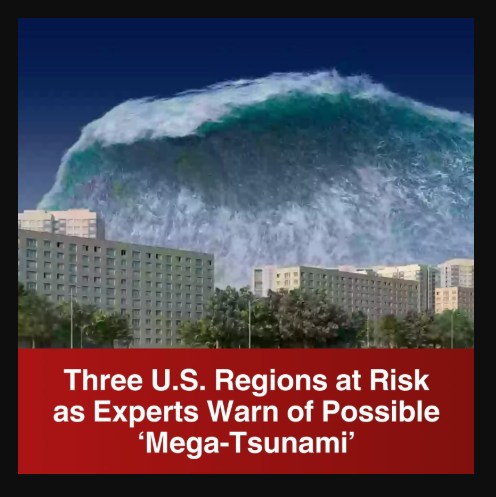Three parts of the United States—the Pacific Northwest, East Coast, and Gulf Coast—are in the crosshairs of potential tsunamis and flooding. Scientists warn that these areas face serious dangers from shifting earth, underwater landslides, and rising seas fueled by climate change. For communities in these regions, learning about the risks and preparing for the worst isn’t just smart—it’s essential for survival.
Tsunamis are massive waves sparked by events like earthquakes or underwater landslides. They speed through the ocean, growing taller and more destructive as they reach shallow waters. When they crash into the shore, they can flood towns and cities in minutes. Climate change is making these threats worse, raising sea levels and eroding coastlines, which lets water push farther inland and cause more destruction. For coastal residents, being ready to act fast is a must.
The Pacific Northwest faces the highest risk, sitting on the Cascadia Subduction Zone, where tectonic plates are locked in a slow, dangerous dance. Experts say there’s a 37% chance of a major earthquake in the next few decades, which could unleash a tsunami that swamps towns in Oregon, Washington, and northern California. With little time to escape, local leaders are working to create clear evacuation paths and better warning systems to help people reach safety before the waves hit.
The East Coast, while less likely to face frequent earthquakes, isn’t safe from tsunamis. Underwater landslides or quakes in the Caribbean or Atlantic could send waves racing toward coastal cities from Florida to Maine. The region’s low-lying land and bustling urban centers make flooding a major concern. If a tsunami hits during a hurricane, the combined impact could be catastrophic, complicating rescue efforts.
The Gulf Coast has a lower tsunami risk but still faces real threats. Its flat shores and history of underwater landslides make it vulnerable, especially as rising seas and coastal erosion worsen. States like Texas, Louisiana, and Florida already deal with hurricanes, and a rare tsunami could make things even worse. Communities here need to prepare for all kinds of coastal disasters.
When a tsunami is coming, every moment counts. A strong earthquake or a sudden drop in the ocean—called a drawback—are signs to head for higher ground immediately, without waiting for official alerts. Scientists say quick action can save lives, as tsunamis often strike with little warning.
Climate change is raising the stakes, pushing sea levels higher and weakening natural barriers like beaches and wetlands. This makes even smaller waves more dangerous than before. Communities need to adapt to these changes to stay safe.
Researchers and local officials are teaming up to improve tsunami detection, streamline evacuation plans, and teach people what to do. While tsunamis can’t be stopped, being prepared can lessen their impact. For those living in the Pacific Northwest, East Coast, and Gulf Coast, staying informed and ready could make all the difference when nature strikes.


